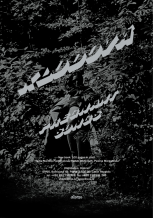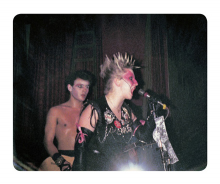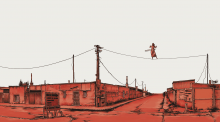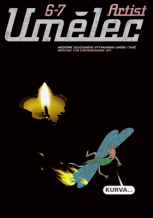| Umělec 1998/3 >> Interview with Dennis Elliot (Director, International Studio Program, NYC) | Просмотр всех номеров | ||||||||||||
|
|||||||||||||
Interview with Dennis Elliot (Director, International Studio Program, NYC)Umělec 1998/301.03.1998 Pavla Niklová | news | en cs |
|||||||||||||
|
The Soros Center for Contemporary Art Prague (SCCA Prague) has started an International Exchange/Residency Program for visual artists from the Czech Republic and abroad. This year, the Center has established collaboration with the International Studio Program (ISP) in New York City through which two Czech artists will have the possibility to participate in three-month residencies at ISP. I asked the director of the ISP, Dennis Elliot, a few questions. Over the last seventeen years, Dennis Elliot has administered five visual arts programs that have brought visual artists to New York City. Currently, he is the coordinator for the Marie Walsh Sharpe Art Foundation’s Space Program and Program Officer for the Elizabeth Foundation for the Arts. In 1994, he founded the International Studio Program and in 1997, he founded the International Curator Program.
Could you describe what the ISP does and why you established it? The initial idea was to gather a high level of artists in lower Manhattan and help them develop their careers. I needed a program that would attract mature and ambitious artists who wanted to work in New York, as well as sponsors to fund this activity. I also had to establish a level of respect and visibility within the New York and international art communities. Having developed a number of other programs during the last fifteen years, helped give this program some immediate credibility. The ISP was founded four years ago in the same building where I have coordinated a space program for the Marie Walsh Sharpe Art Foundation (MWSAF) for the last eight years. This Colorado foundation funds free studios for American artists and legal residents. The MWSAF and the ISP are not affiliated. Aside from offering 14 attractive studios in TriBeCa, the ISP provides a program of activities: a Guest-Critic Series, field trips outside of New York City and Open-Studio Exhibitions/Receptions. Twice a month, the ISP invites a prominent artist, curator, gallery owner or writer to meet with each participant in private for a minimum of 30 minutes. This meeting is less a critique than an introduction to the artwork. The guest critic series has been very successful for all concerned. Many of the participants were offered galleries, one-person shows, group shows and lectures. The program also organized exchanges, sending ISP artists to Berlin and Lodz, Poland. To date, two of the participants have received other grants - an Elizabeth Foundation for the Arts Individual Grant and an artist-in-residency fellowship in Iowa - resulting from their tenure in the program. Twice a year, the program organizes an Open-Studio Exhibition which attracts 400 to 500 people from the New York and international art communities. Another part of the program are field trips to Washington, Boston, Philadelphia and the Sculpture Center at Storm King in upstate New York. Among other things, these outings promote an exchange of ideas and experience encouraging a sense of community within the program. Finally, the program attracts a large number of international visitors - ratites, curators, gallerists, critics, journalists, museum and residency program personnel - from more than 40 countries. Whenever appropriate, these visitors are made available to the artists. Having said all this, none of these activities are mandatory. The artist is encouraged to participate in everything but may choose more privacy. What could you say about the concept of residency centers in general? In the United States, there are about seventy to eighty formally organized artists’ communities serving thousands of artists annually. When did this tradition begin? The first residency programs in the United States were established in the early 20th Century. Yaddo in upstate New York and MacDowell Colony in New Hampshire were two of the first. MacDowell Colony was established by the composer Edward MacDowell’s widow Marion in 1906. Yaddo was established in 1926 by Spencer Trask with the idea of giving ratites an environment to create their work. The premise of most „Artist in Residence“ programs is to support ratites in their work by giving them space and free them up from daily routines. This is still the mission of the more newly established US residency programs many of which came into being during the 1980‘s. What separates the ISP from most other residency programs is the emphasis on developing the ratites’ careers. The ISP is urban as opposed to most other programs which are, more often than not, located in remote and bucolic surroundings. ISP is not-for-profit in structure but is run more as a business. Our motto might be: „If you introduce the most mature and ambitious artists that the sponsor can send to the best that New York has to offer, something has got to happen“. While ISP brings in most of the sponsors who then select the artists, there is another way into the program. An artist cannot apply directly to the program. It is not run as a grant-giving organization. However, if the program decides that it wants to have an artist participate in the program, we encourage that artist to find a patron - either an organization or an individual. One of the first places to look are corporations that have offices in the United States which can take advantage of our tax-exempt status. This approach of finding one’s own sponsor may seem formidable at first. But in many cases it is preferable and more expedient than applying for grants and being at the mercy of a selection process. I think this is the funding of the nineties and that ratites have much more leverage than they know. How long should an ideal residency be? Usually, we recommend one year. The artists need to produce a body of work that they are comfortable with while acclimating to the New York art community. Most of the ISP ratites come for six months or longer. The minimum should be three months. Only a few, like ArtsLink’s artists come for a shorter period. Where do residency centers get their finances? Most residency programs in the United States are privately funded by foundations and/or corporations. The ISP is primarily fueled by sponsor fees from governments, corporations, foundations and individuals. However, the sponsor fees are not enough to cover program costs. The program is constantly fundraising to initiate new sponsorships, cover operating costs and expanding the direction of the program. This funding comes from many different sources. Some of the more recent contributors are the playwright Edward Albee, the Lannan Foundation, Christie’s and the Greenwich Collection, Ltd. The Elizabeth Foundation for the Arts (EFA) has been the most supportive organization almost from the beginning of the program. The EFA initially considered coming in as a sponsor but wanted to be more involved. A partnership based on equal need and a symbiotic approach to how best to support visual artists evolved. The Foundation offers support in much needed areas: accounting, grant applications, proofing, office equipment, etc. but most important gives moral support: the day-to-day counseling and ongoing discussions as to the direction of the program and what improvements can be made. What is your experience with artists from Central and Eastern Europe? Do you know any Czech contemporary visual artists? ArtsLink has sponsored four artists to the program: Piotr Kurka, Malgorzata Niedzielko, Malgorzata Borek from Poland and Antoni Maznevski from Macedonia. These artists were in the program for only five weeks. They did meet with a number of guest critics and participated in the program’s Open-Studio Exhibition. The brevity of their stay made it difficult for them to get the work out in the New York art community. The program did work with the Kosciusko Foundation in NYC over a period of two years to bring one of the artists, Piotr Kurka, back for six weeks in 1997. In 1997, the ISP was awarded a grant from the Trust for Mutual Understanding to organize and fund an exchange with the Artists’ Museum in Lodz, Poland. The program sent American painter/writer Marjorie Welish to Lodz for six weeks where she worked in collaboration with Jerzy Grzegorski and, in return, the Artists’ Museum sent Ryszard Wasko to the ISP for three months. Marjorie was invited to return to Lodz two other times to give lectures. In addition to participating in all the program’s activities, Ryszard showed a video and gave a lecture on the Artists’ Museum and Robert Morgan wrote an article in New York Arts on Ryszard’s work and participation in the ISP. In April of this year, Anda Rottenberg, director of the National Gallery of Contemporary Art Warsaw was a guest-critic in the program. Other than a few Czech artists who have visited the program, we have not had the opportunity to work with anyone from the Czech Republic. Fortunately, that will change due to the generous grant from the Trust for Mutual Understanding which will fund the first two Czech artists in to the International Studio program this year.
01.03.1998
Рекомендуемые статьи
|
|||||||||||||
|
04.02.2020 10:17
Letošní 50. ročník Art Basel přilákal celkem 93 000 návštěvníků a sběratelů z 80 zemí světa. 290 prémiových galerií představilo umělecká díla od počátku 20. století až po současnost. Hlavní sektor přehlídky, tradičně v prvním patře výstavního prostoru, představil 232 předních galerií z celého světa nabízející umění nejvyšší kvality. Veletrh ukázal vzestupný trend prodeje prostřednictvím galerií jak soukromým sbírkám, tak i institucím. Kromě hlavního veletrhu stály za návštěvu i ty přidružené: Volta, Liste a Photo Basel, k tomu doprovodné programy a výstavy v místních institucích, které kvalitou daleko přesahují hranice města tj. Kunsthalle Basel, Kunstmuseum, Tinguely muzeum nebo Fondation Beyeler.
|






























 New book by I.M.Jirous in English at our online bookshop.
New book by I.M.Jirous in English at our online bookshop.
Комментарии
Статья не была прокомментированаДобавить новый комментарий